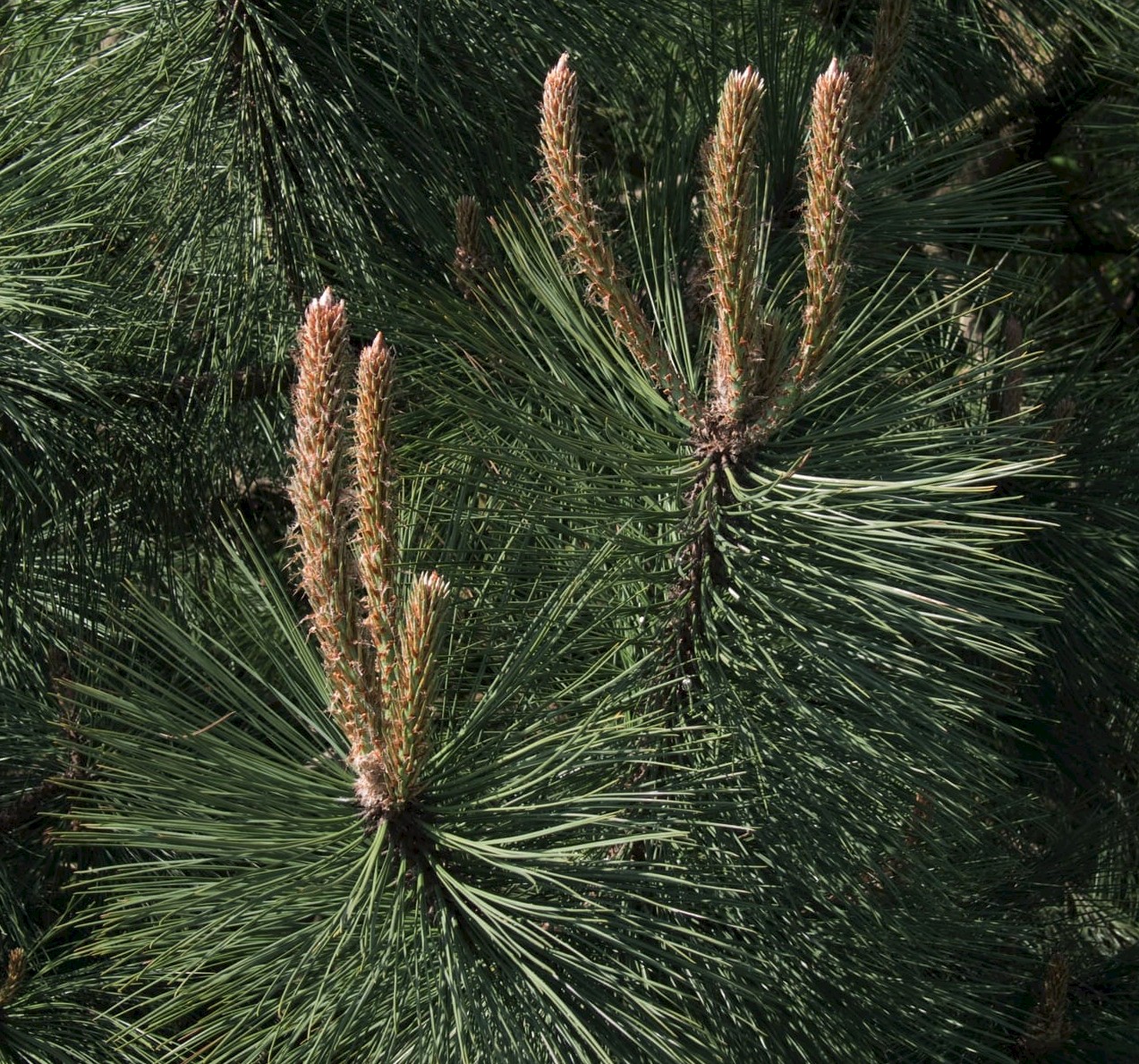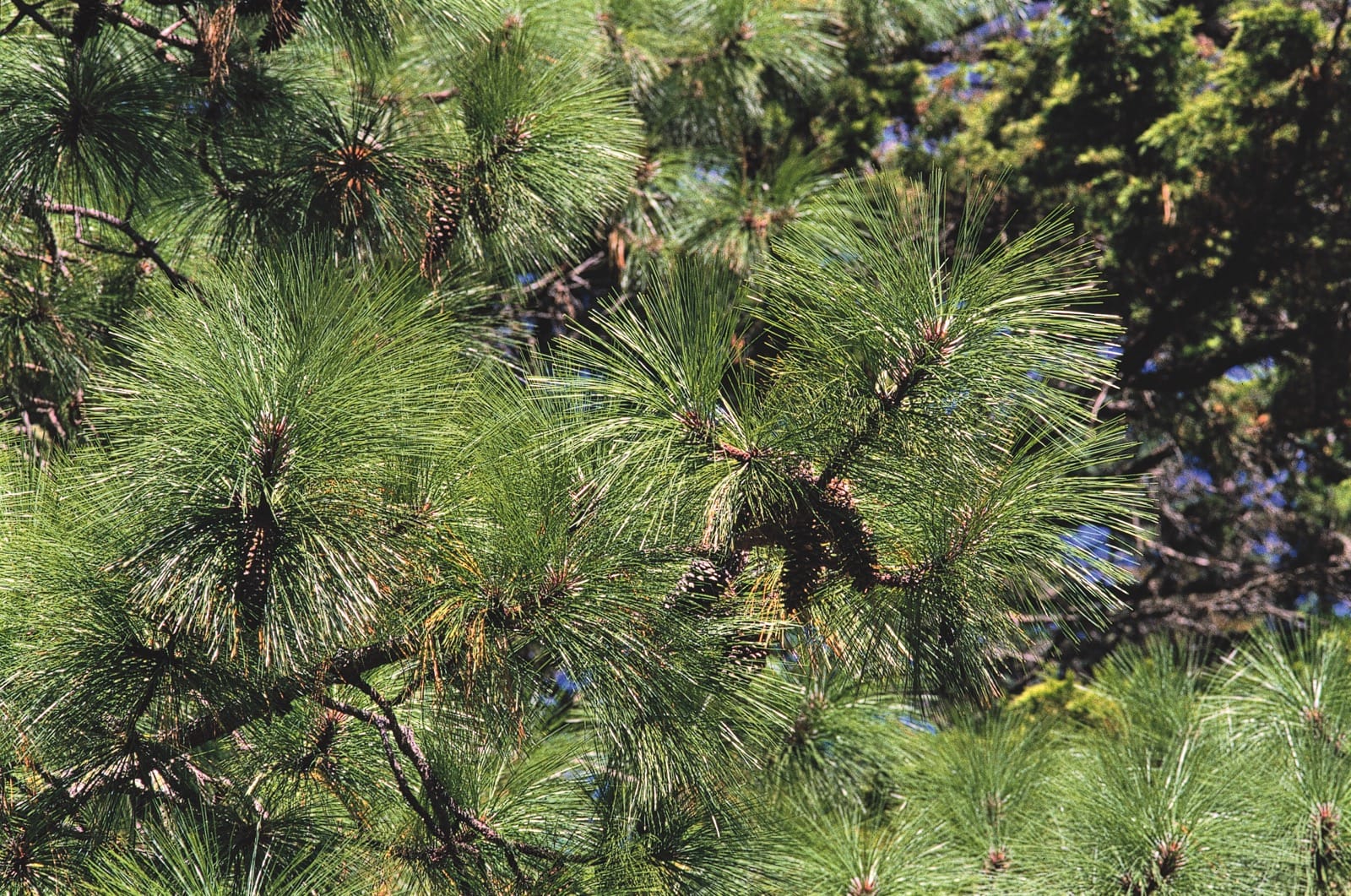Pinus durangensis
Credits
Article from New Trees by John Grimshaw & Ross Bayton
Recommended citation
'Pinus durangensis' from the website Trees and Shrubs Online (treesandshrubsonline.
Other taxa in genus
- Pinus albicaulis
- Pinus arizonica
- Pinus armandii
- Pinus attenuata
- Pinus ayacahuite
- Pinus balfouriana
- Pinus banksiana
- Pinus bhutanica
- Pinus brutia
- Pinus bungeana
- Pinus canariensis
- Pinus cembra
- Pinus cembroides
- Pinus chiapensis
- Pinus contorta
- Pinus coulteri
- Pinus culminicola
- Pinus densata
- Pinus densiflora
- Pinus devoniana
- Pinus echinata
- Pinus edulis
- Pinus elliottii
- Pinus engelmannii
- Pinus eremitana
- Pinus flexilis
- Pinus gerardiana
- Pinus greggii
- Pinus × hakkodensis
- Pinus halepensis
- Pinus hartwegii
- Pinus heldreichii
- Pinus henryi
- Pinus × holfordiana
- Pinus hwangshanensis
- Pinus jeffreyi
- Pinus johannis
- Pinus koraiensis
- Pinus lambertiana
- Pinus leiophylla
- Pinus longaeva
- Pinus massoniana
- Pinus maximartinezii
- Pinus monophylla
- Pinus montezumae
- Pinus monticola
- Pinus morrisonicola
- Pinus mugo
- Pinus muricata
- Pinus nelsonii
- Pinus nigra
- Pinus oocarpa
- Pinus orizabensis
- Pinus palustris
- Pinus parviflora
- Pinus patula
- Pinus peuce
- Pinus pinaster
- Pinus pinceana
- Pinus pinea
- Pinus ponderosa
- Pinus pseudostrobus
- Pinus pumila
- Pinus pungens
- Pinus quadrifolia
- Pinus radiata
- Pinus remota
- Pinus resinosa
- Pinus rigida
- Pinus roxburghii
- Pinus sabiniana
- Pinus serotina
- Pinus sibirica
- Pinus strobiformis
- Pinus strobus
- Pinus sylvestris
- Pinus tabuliformis
- Pinus taeda
- Pinus taiwanensis
- Pinus teocote
- Pinus thunbergii
- Pinus torreyana
- Pinus virginiana
- Pinus wallichiana
- Pinus wangii
- Pinus yunnanensis
Tree to 40 m, trunk erect, straight, 0.8–1 m dbh. Bark rough, scaly, reddish brown; in older trees, breaking into large, irregular plates separated by shallow, longitudinal fissures. Crown dense and globose, trunk clear of branches for half or three quarters of its height. Branchlets glaucous, orange- or dark reddish brown, rough; vegetative buds not resinous. Leaves in fascicles of (four to) five to six (to seven, or rarely eight), persisting for two to three years, yellowish green to glaucous, straight or slightly curved, triangular in cross-section, 14–24 × 0.07–0.1 cm, apex acute. Fascicle sheaths 2–3 cm long, orange-brown. Cataphylls large, 1.5 cm long, subulate then reflexed, dark brown. Male strobili cylindrical to ovoid. Female cones subterminal, solitary, paired or in whorls of three to four, peduncles stout, persistent. Cones 5–9(–11) × 4–6(–7) cm, purple or glaucous, mature in winter at about 20 months old; mature cones ovoid, slightly curved. Scales 90–120, spreading easily at maturity, thick, woody, broadly oblong; apophysis raised or flat, rhombic to pentagonal; umbo dorsal, raised, prickle deciduous or persistent. Seeds light brown to grey; wings effective, 1.4–2 × 0.6–0.9 cm, light greyish brown. Farjon & Styles 1997, Farjon et al. 1997, Farjon 2005a. Distribution MEXICO: Chihuahua, Durango, Jalisco, Michoacán, Sonora, Zacatecas. Habitat Pine-oak forests between 1400 and 3000 m asl. USDA Hardiness Zone 8. Conservation status Lower Risk. The stem of P. durangensis is tall and straight, making it a popular target for timber exploitation. Many of the pure stands have been decimated, though the tree is still relatively common in mixed forest. Illustration Farjon & Styles 1997; NT581, NT599. Cross-reference K217.
In his important book Conifers in the British Isles Alan Mitchell (1972) rather baldly recorded that Pinus durangensis and a few other species were introduced in 1962, but provided no further information. The source of this seed has been a question of interest to conifer enthusiasts ever since, and has now been traced for us in the Forestry Commission records by Richard Jinks (pers. comms. 2007, via D. Luscombe). It was sent to the Forestry Commission by the Mexican Instituto Nacional de Investigaciones Forestales, reciprocated by a gift of seed from the United Kingdom, and was principally used to raise trees for trialling in arboreta and Forestry Commission sites. A further small introduction from the same source was made in 1973 for Alan Mitchell. The P. durangensis seed was collected in 1961 in Chihuahua. There are good trees at Bedgebury, Westonbirt and Alice Holt, Hampshire. The largest is at Bedgebury and was 16 m tall (70 cm dbh) when measured by Owen Johnson in 2005 (TROBI). Another 16 m specimen but with a smaller girth (49 cm) was measured in 2001 at Bicton Park Botanical Gardens, Devon. Several other introductions have been made since 1973, and the species grows in collections scattered through the milder parts of our area. It appears to do well in the climate of southern England, growing steadily though perhaps not rapidly; a tree at Wakehurst Place received as a young plant in 1989, grown from a collection made in Chihuahua by Peter Catt, was apparently vigorous but only 5 m tall when seen in 2005. With its upright but relatively slender needles and reddish bark this is an attractive tree, that could be planted more widely in warmer areas.



